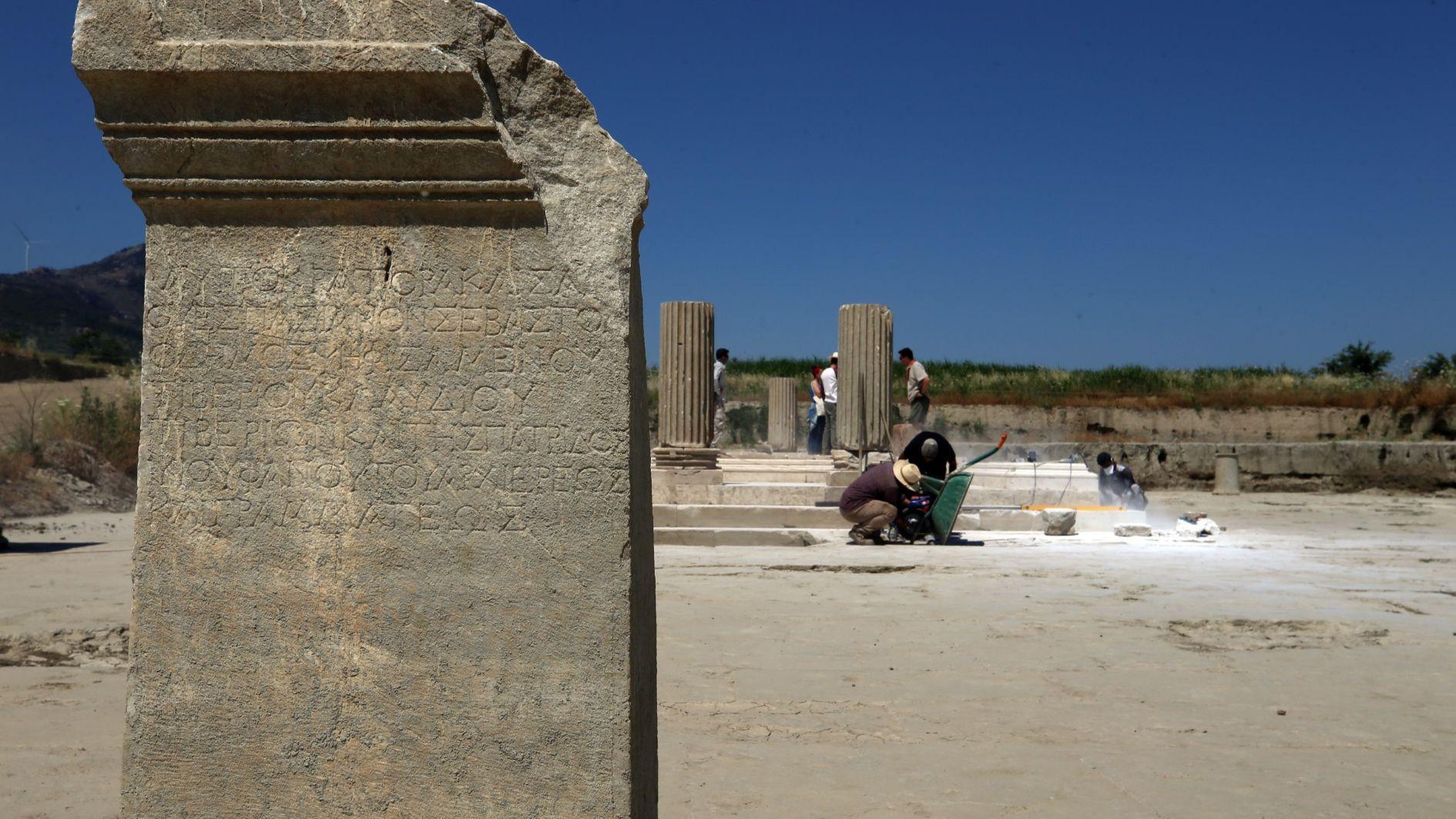
Excavations in the 2,400-year-old ancient city of Magnesia, located in the Germencik district of the western province of Aydın, have brought to light a significant part of the site’s largest public square, or agora, revealing well-preserved marble flooring across a wide area.
Led by Associate Professor Görkem Kökdemir from Ankara University’s Faculty of Language, History and Geography, the archaeological team has uncovered nearly 10,000 square meters of the 25,000-square-meter agora since work began in 2021. The excavations are being carried out as part of the Culture and Tourism Ministry’s “Heritage for the Future” project.
Speaking to the state-run Anadolu Agency, Kökdemir explained that the agora had been buried under layers of silt caused by centuries of earthquakes and flooding from the Büyük Menderes River. Despite a four-meter-thick accumulation of debris, many of the underlying architectural elements have been found intact.
“We’ve recovered an incredible find — almost the entire 10,000-square-meter area we’ve uncovered so far retains its original marble flooring in excellent condition,” Kökdemir said. “Given that the agora spans 25,000 square meters, we’ve now revealed nearly 50 percent. Our next step is to expand toward the southern stoas along the short side of the square.”
According to Kökdemir, colonnades and rooms frame the agora on all four sides. These enclosed spaces are believed to have served as state archives, and earlier excavations, including those carried out during the German-led digs, yielded close to 200 inscriptions from just two small rooms.
“When the work is completed, we’ll have uncovered a vast 25,000-square-meter archive — potentially the largest and best-preserved agora in the entire Mediterranean basin,” he added. “Finding one so intact is incredibly rare.”
Kökdemir noted that this agora served not as a commercial marketplace, but as the symbolic and administrative heart of the city — a site that housed and preserved collective memory.
“This is not the kind of agora where trade happened. Think of it as a monumental complex holding the spirit and memory of the city,” he said. “It’s the city’s heart, its soul. And all that knowledge embedded in the structure will help us transmit its legacy to the future.”
He added that once the excavations are completed, the findings will offer invaluable insights into the history of Western Anatolia.